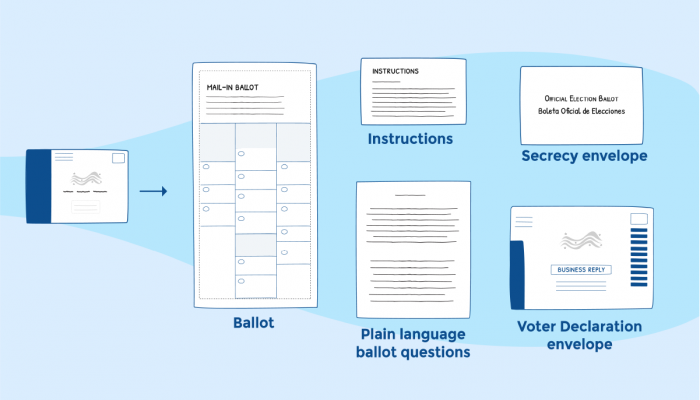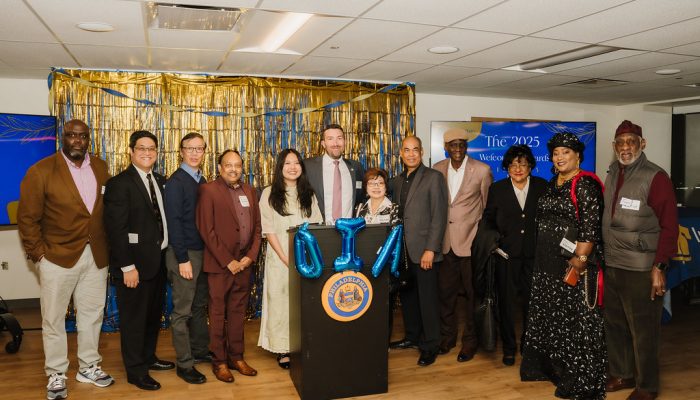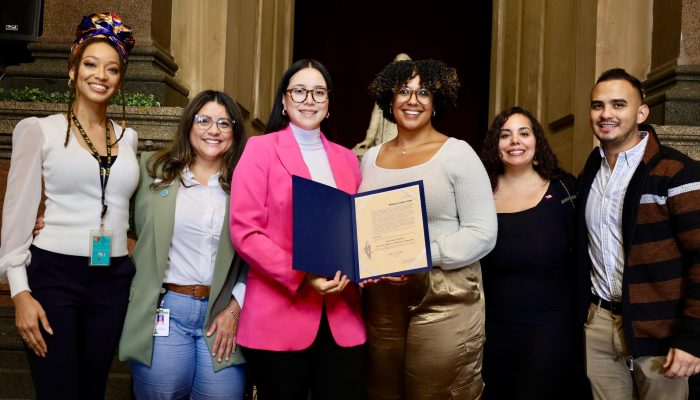This is a case study about a project with the Office of Immigrant Affairs from July to September 2020.
Partners
City of Philadelphia:
- Main project partner — Office of Immigrant Affairs (OIA)
- Office of Innovation and Technology (OIT) Digital Services and Software Engineering teams
- Law Department
- Office of the City Commissioners
- Mayor’s Office of Civic Engagement and Volunteer Services (MOCEVS)
- Mayor’s Policy Office (MPO)
Community-based organizations:
- Coalition of African and Caribbean Communities (Africom)
- VietLead
- Southeast Asian Mutual Assistance Association Coalition (SEAMAAC)
- Philadelphia Chinatown Development Corporation (PCDC)
- Citizens for Language Access
Stakeholder participation
39 Philadelphians of a median age of 55 participated in usability testing sessions, including:
- Nine Chinese-speaking voters.
- Eight French-speaking voters.
- Eight Spanish-speaking voters.
- 14 Vietnamese-speaking voters.
Background
The November 2020 general election was an important election that presented several challenges:
- More voters turn out for presidential elections.
- Due to the pandemic, many voters were expected to vote by mail.
- Pennsylvania made mail-in ballots available in October 2019.
- In Philadelphia, the mail-in ballot was only available in English and Spanish. However, according to 2019 ACS data, 23% of Philadelphians speak languages beyond English (Census chart S1601).
These realities were coupled with extensive misinformation campaigns about voting by mail — making it important to clarify the mail-in ballot and voting process. We also needed to reduce language barriers so voters across literacy and English proficiency levels could vote by mail with agency and confidence.
Goals
The project goal was to create a visual guide that:
- Clarifies information about the general election, how to apply to vote by mail, and how to fill in and seal a mail-in ballot.
- Written in plain English and is translated into the languages requested by community as well as the top languages spoken in Philadelphia.
- Is tested for its usability with potential voters who have limited English proficiency and low digital access before broad implementation.
How we worked
The project spanned five phases of work.
- Prototyping: We created a prototype of the print guide in plain English, Spanish, Chinese (simplified), Vietnamese, and French.
- Designing research: We defined our usability testing objectives and identified activities that would reveal how potential voters might use the guide to fill in their mail-in ballot. We focused on voters with limited English proficiency who also have low digital access.
- Facilitating usability testing: We worked with three immigrant-centered community partners to conduct usability testing sessions in Spanish, Chinese (simplified), Vietnamese, and French. We trained community partners on how to facilitate usability testing and provided translated testing materials. Our community partners recruited their constituents to participate and facilitated testing sessions. The City compensated project partners and residents for their participation.
- Finalizing content and design: We revised the content and design of the guide based on results from usability testing sessions and updated local and state election guidance. The print and digital guides were launched on phila.gov in early September 2020.
- Distributing: OIA distributed the print version of the mail-in ballot voter guide at satellite election offices where voters could use it to fill in their mail-in ballot. The print version was available in English, Spanish, Chinese (simplified), Vietnamese, French, Russian, and Korean. The digital guide was available on phila.gov in the top twelve languages spoken in Philadelphia, including English. The print guide could be downloaded from the phila.gov site in several formats.
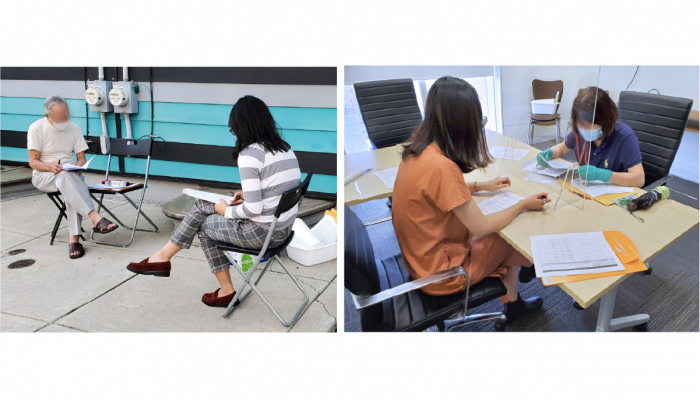
What we did
We created an informational ecosystem to build awareness of the guide and distribute it (digitally and non-digitally) to a broad, multilingual audience.
- Print postcards that made voters aware of the mail-in process and directed them to the digital guide on phila.gov for detailed information. The postcards were available in English, Spanish, Chinese (simplified), Vietnamese, and French. Local community groups distributed over 2,500 postcards to community members.
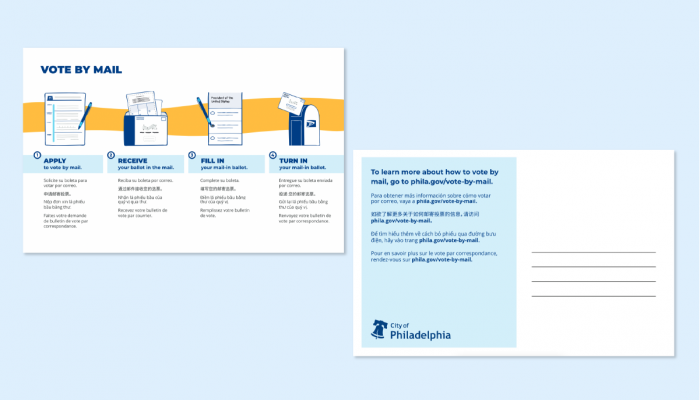
A postcard that shows an illustrated process on the front and instructions to the access the digital voter guide on the back.
- Print guide that included important voting deadlines, plain language explanations of the ballot questions, how to apply to vote by mail, how to fill in a mail-in ballot, and how to sign and seal a ballot. We printed 5,000 guides in English, Spanish, Chinese (simplified), Vietnamese, French, Russian, and Korean.
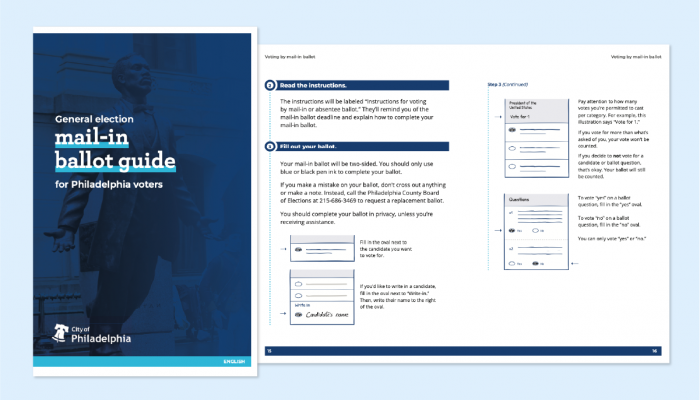
The print voter guide cover along with a spread that breaks down the steps to vote by mail with illustrated images. - Digital guide on phila.gov that contained the same information as the print guide. The digital guide was available in twelve languages on phila.gov, including English. Over 16,000 people, or 3.59% of all phila.gov traffic, accessed the digital guide from September to November 2020.
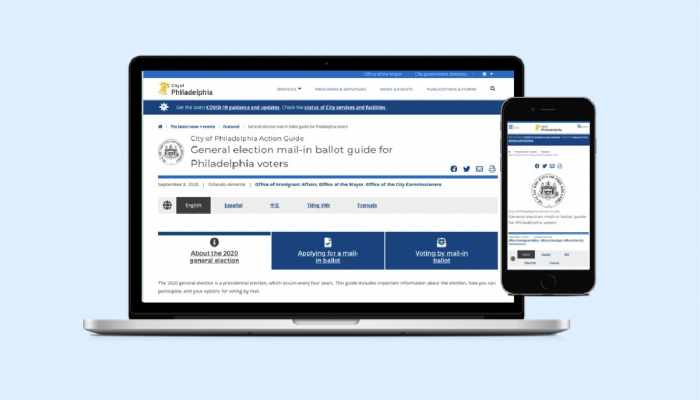
The digital voter guide on phila.gov displayed on a laptop and mobile phone.
Contact us
We’d love to hear your thoughts about this post. Email us at service.design@phila.gov or join us on Twitter @DesignStudioPHL.

